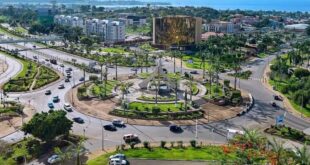Kumbungu, Ghana – Continues pile up of debt and sand-winning activities on the Nawuni River could force the Ghana Water Company Limited in the Northern Region to shut down its treatment plant at Dalun in the Kumbungu District.
According to the Regional Chief Manager, Engineer Stevens Ndebugre, the sand-winning activities is causing debris and sand particles to pile up around the intake point of the treatment plant, posing danger to their operations.
He told journalists during a visit by Parliament’s Committee on Works and Housing that, government and private institutions such as second cycle institutions, sachet water producers, hospitals and universities owed the company over Ghc14 million.
“Tamale Teaching Hospital owe us about Ghc1 million. UDS is also owing us a lot. The second cycle institutions, as for them, we don’t talk about them. Since 2013 these institutions have been owing us”, Ing. Ndebugre disclosed.
He continued: “You see when they get money they can pay for other things. But water, they not pay because they feel that we can’t do anything……how do we get money to treat the water? We need to get that money, buy the chemicals and treat for them to drink.
“If we don’t get the money, a time will come this plant will shut down. If it shuts down the whole of Tamale will suffer. This time when I go after them, we will disconnect them. So I want to send a signal to them that they should prepare and wait for us”, he declared.
The Nawuni River, the main production Source of potable water for residents of the Tamale Metropolis, savelugu and Sagnarigu Municipalities as well as the Tolon and Kumbungu Districts, has come under serious environmental threat.
Years of uncontrolled sand-winning by building contractors and owners of tipper trucks, has destroyed farmlands and the ecosystem along the river banks including economic and medicinal plants.
As a result, the depth of the river has drastically reduced over the years due to silts which have incapacitated its water holding ability.
More worrying is the fact that, the silting of the river is also threatening its future capacity to supply the required volume of water to over 500, 000 people.
The shallowness of the river has resulted into perennial flooding of communities along its banks which sometimes has led to loss of lives and property.
About 54 percent of water currently produced by the GWCL in the Northern Region is unaccounted for and this has been attributed to illegal connection and by many customers to pay their bills.
By Savannahnewsonline.com
 Savannah News Online Reporting Only What Matters Most
Savannah News Online Reporting Only What Matters Most



